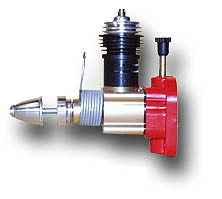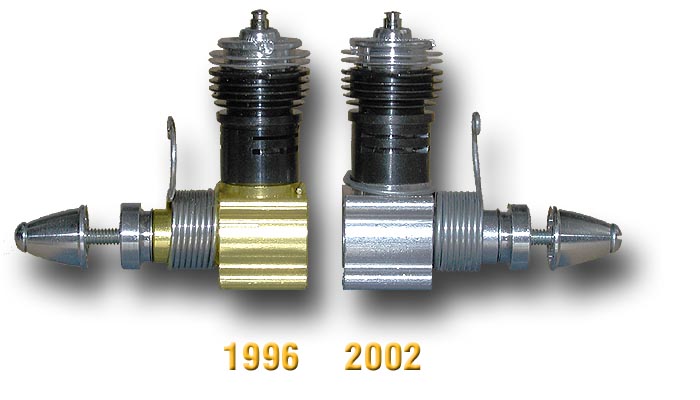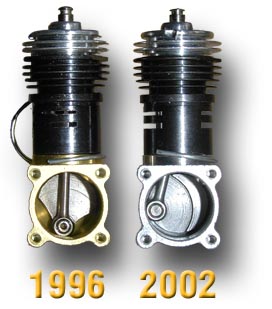The Killer Bee Family |

Manufactured in 1996(?) (#340)
Advertised as a high performance competition engine, this engine is also available with a displacement of .051 cubic inches. The cylinder has the double slotted exhaust ports of the Texaco and Babe Bee. The needle extension of this run of Killer Bees was made from a piece of plastic tube. This was lightweight, cheap and reduced vibration loads on the needle thread.

Manufactured in 1997 (#360)
The larger brother of the .049 Killer Bee came also without a mesh screen on the intake to improve performance. Both Killer Bees have the old style spring starter, which completely disengages to avoid friction losses. The two models differ in cylinder/piston and back plate only.


Both engines have a sub induction cylinder, which means that the upper slots work as an exhaust and the lower slots are open at top dead center to draw some fresh air into the crankcase. So the fuel air mixture entering through the carburetor (with its narrow passages and associated pressure loss) can be rich and additional fresh air is sucked in through the open slots which have a lower flow resistance. This increases performance. Note that sub induction engines do not work well with a muffler or inside a cowling - they start to breath their own exhaust gases.
The initial production of the Killer Bee used a gold anodized crankcase and a plastic needle extension whereas the later models came with a plain anodized crankcase and the standard needle valve having a black plastic cap.
Another difference is the material of the reed valve: the older engine has a transparent plastic reed while the later engine has a steel reed valve. In both cases the plastic reed retainer is used.

The later Estes engine came with a standard Babe Bee type crankshaft without these improvements. I have not checked the piston, but I doubt whether it includes the improvements. So it seems more close to a basic Babe Bee with a sub induction cylinder and a different propeller drive washer and spring starter.